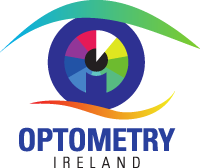Eye-care Waiting Lists Unacceptable at 42,300
Optometrists can get eye patients seen sooner
Optometrists today warned that the waiting list for eye-care remains unacceptably high at more than 42,300 – and
said they have available capacity to get more patients seen sooner.
National Treatment Purchase Fund (NTPF) figures to December 2022 show 33,268 people were on the outpatient
eye-care waiting list, with more than 12,118 of these waiting more than a year.
9,108 were awaiting inpatient eye procedures, with almost 1,000 people for over a year. (This figure increased further
to 9,463 at the end of January 2023)
Optometry Ireland’s (OI) CEO Sean McCrave called on the HSE and Department of Health to engage with
Optometrists to make greater use of the capacity and expertise that the profession has available.
“There are 300 Optometry practices and 700 practitioners who are highly trained, have state of the art equipment and
have available capacity to provide more public services. It is 50% less expensive to provide routine examinations,
monitoring and care in the community via local Optometrists than in the hospital system.
“We are highlighting this solution to the HSE and they are failing to take the initiative, even though the reforms we
propose are already successfully in health systems across Europe.
“Adults and children are waiting too long for public eye-care in Ireland. These delays negatively affect long term eye
health, independence, education and quality of life.
“The first issue that needs to be addressed is children’s eye-care, particularly for 8-16 year olds for whom there is no
national eye-care scheme. The HSE acknowledged this gap years ago and said it was committed to addressing it.
However, the response has been very slow, minimal and piece meal.
“In some areas over 8s can receive free eye examinations via their local Optometrist. However, there is nothing at all
in other regions (the majority), and then ad hoc arrangements in other areas. In no part of the country is there a formal
agreement on a defined public eye examination scheme for these children. There is a geographical inequality and this
must end.”
OI’s newly elected President Tania Constable said Optometrists are immediately available to provide a planned
scheme for over 8s in all regions across the country – with no additional staffing, equipment, or training required to
provide it.
“The highly successful Sligo Cataract Scheme in the North West, involving greater partnership between Sligo hospital
and Optometrists, provides an example of what can be done. It has resulted in greatly reduced waiting times for
cataract treatment in that region.
“Resourcing the needs of both over 8 children and cataract services for adults nationally, via a public agreement with
Optometrists, would free up resources in hospitals and HSE clinics which would address lengthy waiting times. Doing
so would enable earlier diagnosis, earlier treatment and better outcomes for patients.
“Furthermore, Optometrists should be sanctioned to apply greater use of medication for chronic eye conditions in line
with their level of training. This would alleviate some of the resource challenges faced by GPs.”
Mr. McCrave concluded by saying: “What is needed is the will in the HSE, Department of Health and from the Minister
for Health to plan and implement badly needed reform to public eye-care,” Mr. McCrave said.
Further Information
Ronan Cavanagh, Cavanagh Communications: (086) 317 9731.
www.optometryireland.ie
Optometry Ireland (OI) is the professional representative body for the vast majority of practising Optometrists in
Ireland, including 700 members in 350 locations nationwide. OI works to ensure the highest possible standards in
provision of clinical and dispensing eye-care services to the public.
